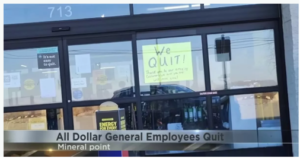Author’s Note: This is the fourth of a series of six posts about Why You Shouldn’t Be Surprises Your VOC Program is Failing.
Voice of the Customer (VOC) programs are not self-sufficient islands. They need a wide variety of resources from across the company. And, other people control those resources. Here are just a few examples:
- Data from multiple systems and departments
- Analytical resources with different specialties and perspectives
- Funding for research efforts, VOC program tools and personnel
- Trust in the VOC findings and in the stated value of taking action
- Willingness to invest resources to take action on VOC insights rather than other projects
- Enthusiastic and passionate support for the VOC program from the C-suite
This list demonstrates, the success of the VOC program as well as individual VOC projects depends upon the resources of others and the relationships the VOC leader has with those who control the required resources. As pointed out in McKinsey Quartery in 2005, most executives believed coordination was crucial for company growth–a key objective of VOC programs–but yet, only one in four actually believed their company was doing this effectively.
“Nearly 80 percent of the senior executives surveyed in a 2005 study said that effective coordination across product, functional, and geographic lines was crucial for growth. Yet only 25 percent of the respondents described their organizations as “effective” at sharing knowledge across boundaries.”
Robert L. Cross, Roger D. Martin and Leigh M. Weiss
McKinsey Quarterly August 2006
There are two significant relationship challenges that I’ve seen over the last 16 years of working with VOC programs and other analytical teams. The first is the desire to “throw research bombs” at the department that is not taking the desired action. This consists of providing research to a senior executive that is intended to embarrass another leader or to force the latter’s hand into taking the action researchers recommended, even if this leader thought it was not the right course of action.
I’ve seen Vice Presidents of analysis teams present data to the C-suite with a storyline that implicated a Vice President in another department (e.g. product management) of failing to take appropriate action. This may seem to be a win in the short-term, but in the long-term it hurts everyone as well as the credibility of the VOC program.
If your data or storyline is not convincing enough to move others to take action, you should seek first to understand their motives and agenda. Then, seek to find a solution from the perspective of the team that needs to take action rather than forcing your agenda upon other leaders and their teams.
The second relationship challenge emerges when researchers believe they should work in a bubble and that their job is just to do research. Numerous times I’ve seen amazing research end up in a file folder or on a shelf full of dusty report binders because the researchers believed their job ended at the moment they delivered their insights.
Nothing is further from the truth. While it may be uncomfortable for the researcher to get involved, customers really want positive change, not mere insights. The change should be guided by the researcher who had the original insights. Therefore, the VOC researcher must learn to engage with the action teams throughout the course of the improvement or innovation project so that the insights are applied accurately and the result is effective.
While working with one client, I experienced the long-term effect of a culture that deeply believed researchers should simply deliver insights. My client’s social marketing team was so accustomed to the company’s other researchers just delivering insights that when I came over with the VOC team to help with implementation, they resisted. We repeatedly attempted to work with them, but the social marketing team insisted that they knew better. So, we decided to deliver exactly what they requested while caveating our deliverables by explaining what we expected would happen if they tried to use the insights as proposed. Within months, our predictions were realized and the investment wasted. If we had been able to build the relationship with the social marketing team instead of allowing them to see us like every other researcher, we would have a different ending to the story.
How You Can Build Critical VOC Relationships
Relationships are challenging. They take work. They take attention. They take time. And, if you don’t invest in them, they will cause your VOC program to ultimately fail to deliver insights that are acted on.
Here is what I suggest:
- Identify those resources and the people who are critical to your VOC program’s capability to create value from the point of data collection through insight generation to action-taking.
- Use your lunch time to meet one-on-one with the people who you depend on for your VOC program’s success to listen, build understanding, express empathy and create a reciprocal relationship.
- Teach your team to do the same.
If you invest an hour every day in deepening these critical relationships, you have the opportunity to improve twenty relationships each month. If your team engages in these actions, you multiply your results and exponentially improve the probability of success for your VOC program.
Read more about Why You Shouldn’t Be Surprised Your VOC Program is Failing.






